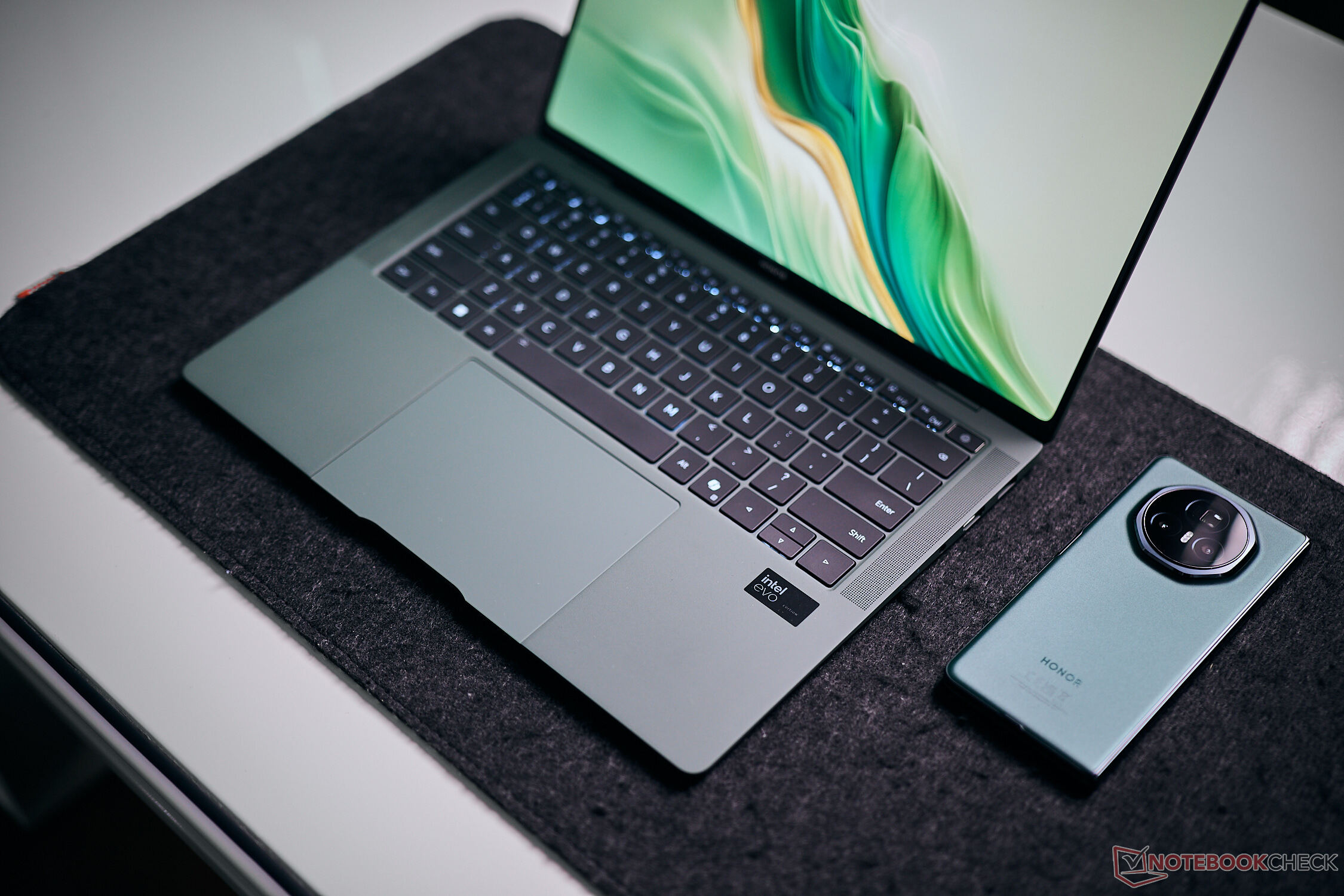
Honor MagicBook Art 14 笔记本电脑 - 配备蒸发腔和创新摄像头的 OLED 超薄笔记本电脑
比 MacBook Air 更好?
Honor 新推出的 MagicBook Art 14 是一款配备了高分辨率 OLED 触摸屏和 Meteor Lake 处理器的优秀超极本。可连接的网络摄像头也是一项真正的创新,效果极佳。散热由蒸汽室提供。Andreas Osthoff, 👁 Andreas Osthoff (translated by DeepL / Ninh Duy) Published 🇺🇸 🇩🇪 ...
Honor 新推出的 MagicBook Art 14 是一款配备英特尔流星湖处理器(Meteor Lake Processor)的轻型子笔记本电脑。酷睿至尊 7 155H),并配备了高分辨率 OLED 触摸屏,频率高达 120 Hz。在网络摄像头方面,Honor 有了新的突破,它采用了可拆卸模块,不使用时只需将其收进外壳即可。这意味着屏幕边缘可以非常窄。我们的测试设备还提供 32 GB 内存和 1 TB SSD;测试时价格尚未公布。此外,还有配备 16GB RAM 和 1TB SSD 的机型可供选择。
潜在的竞争对手比较
Rating | Version | Date | Model | Weight | Height | Size | Resolution | Price |
|---|---|---|---|---|---|---|---|---|
| 89.6 % | v8 | 09 / 2024 | Honor MagicBook Art 14 Ultra 7 155H, Arc 8-Core | 1 kg | 12.9 mm | 14.60" | 3120x2080 | |
| 86.4 % | v8 | 08 / 2024 | Lenovo Yoga Slim 7X 14Q8X9 SD X Elite X1E-78-100, Adreno X1-85 3.8 TFLOPS | 1.3 kg | 15 mm | 14.50" | 2944x1840 | |
| 86.2 % | v8 | 07 / 2024 | Microsoft Surface Laptop 7 13.8 Copilot+ SD X Elite X1E-80-100, Adreno X1-85 3.8 TFLOPS | 1.3 kg | 17.5 mm | 13.80" | 2304x1536 | |
| 89 % v7 (old) | v7 (old) | 06 / 2024 | Huawei MateBook X Pro 2024 Ultra 9 185H, Arc 8-Core | 980 g | 13.5 mm | 14.20" | 3120x2080 | |
| 87.4 % v7 (old) | v7 (old) | 04 / 2024 | Samsung Galaxy Book4 Pro 14 Ultra 7 155H, Arc 8-Core | 1.2 kg | 11.6 mm | 14.00" | 2880x1800 | |
| 86.7 % v7 (old) | v7 (old) | 02 / 2024 | Asus ZenBook 14 UX3405MA Ultra 7 155H, Arc 8-Core | 1.2 kg | 14.9 mm | 14.00" | 2880x1800 | |
| 90 % v7 (old) | v7 (old) | 08 / 2023 | LG Gram Style 14Z90RS-G.AD7AG i7-1360P, Iris Xe G7 96EUs | 987 g | 16.5 mm | 14.00" | 2880x1800 | |
| 92.4 % v7 (old) | v7 (old) | 03 / 2024 | Apple MacBook Air 13 M3 10C GPU M3, M3 10-Core GPU | 1.2 kg | 11.3 mm | 13.60" | 2560x1664 |
» Notebookcheck多媒体笔记本电脑Top 10排名
» Notebookcheck游戏笔记本电脑Top 10排名
» Notebookcheck低价办公/商务笔记本电脑Top 10排名
» Notebookcheck高端办公/商务笔记本电脑Top 10排名
» Notebookcheck工作站笔记本电脑Top 10排名
» Notebookcheck亚笔记本电脑Top 10排名
» Notebookcheck超级本产品Top 10排名
» Notebookcheck变形本产品Top 10排名
» Notebookcheck平板电脑Top 10排名
» Notebookcheck智能手机Top 10排名
» Notebookcheck评测过最出色的笔记本电脑屏幕
» Notebookcheck售价500欧元以下笔记本电脑Top 10排名
» Notebookcheck售价300欧元以下笔记本电脑Top 10排名
注:我们最近更新了评级系统,第 8 版的结果与第 7 版的结果不具可比性。更多信息请点击 这里可在此处查阅。
外壳 - 高质量镁合金
全新 MagicBook Art 14 是一款非常轻薄的笔记本电脑,仅重 1.013 千克(约 2.23 磅)。从外观上看,新款 MagicBook Art 14 与华为 MateBook X Pro 2024 有很多相似之处。 华为 MateBook X Pro 2024Honor 提供三种不同颜色的设备。除了我们测试的绿色版本外,该笔记本还有白色和灰色版本。从外观上看,绿色版本给人一种非常优雅的印象,令人惊讶的是,略带天鹅绒质感的表面并不特别容易沾染指纹。
尽管 MagicBook 拥有 14.6 英寸显示屏,但其整体非常小巧,最重要的是重量非常轻,仅 1.013 千克(约 2.23 磅)。在对比组中,只有 MateBook X Pro 2024和 LG Gram Style 14略轻(20-30 克/约 0.7-1.1 盎司),但并不明显。在高度方面,只有被动散热的 MacBook Air M3和 Galaxy Book4 Pro 14略微扁平一些。由于采用了大尺寸显示屏,其占地面积本身比大多数竞争对手略大。
功能 - 雷电 4、USB-A 和 HDMI
尽管采用了扁平化设计,但Honor 不仅仅局限于 USB-C 端口,还在右侧配备了一个完整的 HDMI 输出和一个普通的 USB-A 端口。因此,在日常使用中无需使用适配器。左侧有两个 USB-C 端口,前端的一个支持现代的 Thunderbolt 4 标准。与 MateBook X Pro(只有 3x USB-C)相比,我们更喜欢 MagicBook Art 的连接性,即使不能双面充电。没有 SD 读卡器。
交流
Honor MagicBook Art 14 采用英特尔著名的 AX211 WLAN 模块,除了 6 GHz 网络外,还使用蓝牙 5.3。配合华硕的参考路由器,MagicBook Art 14 实现了非常高且稳定的传输速率。在测试过程中,我们在信号质量和大容量下载方面都没有遇到任何问题。
| Networking | |
| Honor MagicBook Art 14 | |
| iperf3 transmit AXE11000 | |
| iperf3 receive AXE11000 | |
| Lenovo Yoga Slim 7X 14Q8X9 | |
| iperf3 transmit AXE11000 | |
| iperf3 receive AXE11000 | |
| iperf3 transmit AXE11000 6GHz | |
| iperf3 receive AXE11000 6GHz | |
| Microsoft Surface Laptop 7 13.8 Copilot+ | |
| iperf3 transmit AXE11000 | |
| iperf3 receive AXE11000 | |
| iperf3 transmit AXE11000 6GHz | |
| iperf3 receive AXE11000 6GHz | |
| Huawei MateBook X Pro 2024 | |
| iperf3 transmit AXE11000 | |
| iperf3 receive AXE11000 | |
| Samsung Galaxy Book4 Pro 14 | |
| iperf3 transmit AXE11000 | |
| iperf3 receive AXE11000 | |
| Asus ZenBook 14 UX3405MA | |
| iperf3 transmit AXE11000 | |
| iperf3 receive AXE11000 | |
| LG Gram Style 14Z90RS-G.AD7AG | |
| iperf3 transmit AXE11000 | |
| iperf3 receive AXE11000 | |
| iperf3 transmit AXE11000 6GHz | |
| iperf3 receive AXE11000 6GHz | |
| Apple MacBook Air 13 M3 10C GPU | |
| iperf3 transmit AXE11000 | |
| iperf3 receive AXE11000 | |
网络摄像头
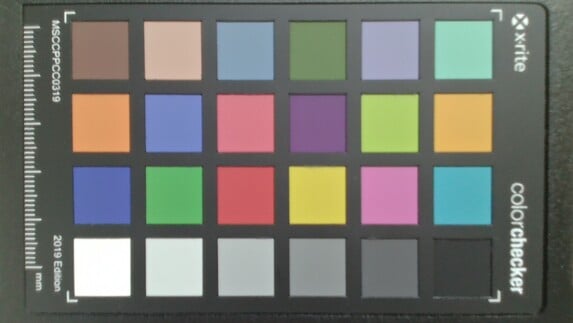
维护
下机箱盖用 Torx 螺钉固定,很容易拆卸,因为它不同于 MateBook X Pro胶合橡胶脚垫下没有隐藏的螺丝。风扇旁边可以接触到 M.2 2280 固态硬盘,但内存和 WLAN 模块是焊接的。冷却系统采用了特殊设计。这里使用了一个薄薄的蒸气室,它还容纳了 WLAN 连接的天线。
输入设备 - 舒适的键盘和触觉触摸板
就像 MateBook X Pro一样,全新 MagicBook Art 14 也配备了一块大型触觉触摸板,因此没有任何活动部件。触觉反馈是通过振动电机模拟的,因此你可以在任何位置点击触摸板,并获得一致的反馈。触摸板还支持边缘手势(亮度、音量),这些手势也能通过振动获得触觉反馈。总的来说,操作非常出色。
电容式触摸屏也可用于输入,其运行效果符合预期,没有任何问题。触摸功能也可以通过预装的 PC Manager 快速菜单停用。
显示屏 - 120 Hz OLED
Honor 它采用 14.6 英寸 OLED 屏幕,分辨率为 3:2 格式的 3,020 x 2,080 像素。屏幕边角采用圆角设计,因此有些图标无法完全显示,但实际上应该没有什么限制。触摸屏的反光性很强,在室内也会出现反光问题,但在明亮的表面上不会出现光栅效应,有些 OLED 面板就会出现这种情况。主观画质非常出色,色彩非常鲜艳,黑色浓郁,对比度极高。120 Hz 的频率也确保了动作的流畅性。亮度可通过传感器自动调节,但色温无法调节。
在 SDR 模式下,OLED 面板的平均亮度为 480 cd/m²,在 HDR 模式下最高可达 704 cd/m²(或在几乎全白的画面下为 670 cd/m²)。这些数值明显低于 MateBook X Pro 2024(620 nits SDR,1,200 nits HDR),但仍明显高于三星目前的 OLED 面板(约 400 nits SDR,约 580 nits HDR)。
| |||||||||||||||||||||||||
Brightness Distribution: 92 %
Center on Battery: 476 cd/m²
Contrast: ∞:1 (Black: 0 cd/m²)
ΔE Color 1 | 0.5-29.43 Ø4.87, calibrated: 0.8
ΔE Greyscale 1.9 | 0.5-98 Ø5.1
86.5% AdobeRGB 1998 (Argyll 2.2.0 3D)
99.9% sRGB (Argyll 2.2.0 3D)
95.9% Display P3 (Argyll 2.2.0 3D)
Gamma: 2.19
| Honor MagicBook Art 14 EDO14.44, OLED, 3120x2080, 14.6", 120 Hz | Lenovo Yoga Slim 7X 14Q8X9 LEN145WQ+, OLED, 2944x1840, 14.5", 90 Hz | Microsoft Surface Laptop 7 13.8 Copilot+ LQ138P1JX61, IPS, 2304x1536, 13.8", 120 Hz | Huawei MateBook X Pro 2024 VisN236HUZ15, OLED, 3120x2080, 14.2", 120 Hz | Samsung Galaxy Book4 Pro 14 ATNA40CU07-0, OLED, 2880x1800, 14", 120 Hz | Asus ZenBook 14 UX3405MA ATNA40CU06-0, OLED, 2880x1800, 14", 120 Hz | LG Gram Style 14Z90RS-G.AD7AG Samsung SDC417F ATNA40YK10-1, OLED, 2880x1800, 14", 90 Hz | Apple MacBook Air 13 M3 10C GPU IPS, 2560x1664, 13.6", 60 Hz | |
|---|---|---|---|---|---|---|---|---|
| Display | 2% | 0% | 4% | -0% | 6% | 4% | 2% | |
| Display P3 Coverage | 95.9 | 97.3 1% | 97.8 2% | 99.8 4% | 97 1% | 99.8 4% | 99.92 4% | 98.4 3% |
| sRGB Coverage | 99.9 | 100 0% | 98.2 -2% | 100 0% | 100 0% | 100 0% | 100 0% | 99.9 0% |
| AdobeRGB 1998 Coverage | 86.5 | 90.8 5% | 87.3 1% | 94.6 9% | 85.2 -2% | 97.6 13% | 94.71 9% | 87.9 2% |
| Response Times | 65% | -4927% | 359% | 8% | 81% | -113% | -5490% | |
| Response Time Grey 50% / Grey 80% * | 0.58 ? | 0.39 ? 33% | 38.9 ? -6607% | 0.75 ? -29% | 0.83 ? -43% | 0.69 ? -19% | 2 ? -245% | 34.5 ? -5848% |
| Response Time Black / White * | 0.52 ? | 0.71 ? -37% | 17.4 ? -3246% | 0.49 ? 6% | 0.69 ? -33% | 0.71 ? -37% | 2 ? -285% | 27.2 ? -5131% |
| PWM Frequency | 120 | 360 ? 200% | 1440 1100% | 240 ? 100% | 480 ? 300% | 350 192% | ||
| Screen | -25% | 1% | -26% | -24% | -5% | -84% | -12% | |
| Brightness middle | 477 | 472 -1% | 606 27% | 613 29% | 392 -18% | 391 -18% | 384 -19% | 525 10% |
| Brightness | 480 | 475 -1% | 592 23% | 624 30% | 398 -17% | 392 -18% | 388 -19% | 506 5% |
| Brightness Distribution | 92 | 97 5% | 94 2% | 93 1% | 97 5% | 98 7% | 97 5% | 92 0% |
| Black Level * | 0.43 | 0.02 | 0.054 | 0.42 | ||||
| Colorchecker dE 2000 * | 1 | 1.4 -40% | 1.3 -30% | 1.9 -90% | 1.3 -30% | 1.1 -10% | 2.47 -147% | 1.4 -40% |
| Colorchecker dE 2000 max. * | 2 | 4.1 -105% | 2.1 -5% | 3.1 -55% | 3.2 -60% | 2.4 -20% | 4.33 -117% | 2.8 -40% |
| Colorchecker dE 2000 calibrated * | 0.8 | 1.5 -88% | 2.81 -251% | |||||
| Greyscale dE 2000 * | 1.9 | 2 -5% | 2.1 -11% | 2.1 -11% | 2.3 -21% | 1.3 32% | 2.63 -38% | 2 -5% |
| Gamma | 2.19 100% | 2.21 100% | 2.16 102% | 2.2 100% | 2.24 98% | 2.17 101% | 2.18 101% | 2.2 100% |
| CCT | 6178 105% | 6493 100% | 6842 95% | 6447 101% | 6517 100% | 6336 103% | 6279 104% | 6876 95% |
| Contrast | 1409 | 19550 | 7111 | 1250 | ||||
| Total Average (Program / Settings) | 14% /
5% | -1642% /
-895% | 112% /
70% | -5% /
-10% | 27% /
20% | -64% /
-70% | -1833% /
-1004% |
* ... smaller is better
Honor MagicBook Art 14 配备了各种色彩配置文件,我们使用专业的 CalMAN 软件(X-Rite i1 Pro 2)对其进行了分析。Native 配置文件默认为激活状态,但色彩有些过度饱和。而P3 配置文件则能非常准确地显示色彩和灰度,只是色温略微偏高。不过,所有偏差都低于 3 的重要限制。
Display Response Times
| ↔ Response Time Black to White | ||
|---|---|---|
| 0.52 ms ... rise ↗ and fall ↘ combined | ↗ 0.27 ms rise | |
| ↘ 0.25 ms fall | ||
| The screen shows very fast response rates in our tests and should be very well suited for fast-paced gaming. In comparison, all tested devices range from 0.1 (minimum) to 240 (maximum) ms. » 0 % of all devices are better. This means that the measured response time is better than the average of all tested devices (20.8 ms). | ||
| ↔ Response Time 50% Grey to 80% Grey | ||
| 0.58 ms ... rise ↗ and fall ↘ combined | ↗ 0.3 ms rise | |
| ↘ 0.28 ms fall | ||
| The screen shows very fast response rates in our tests and should be very well suited for fast-paced gaming. In comparison, all tested devices range from 0.165 (minimum) to 636 (maximum) ms. » 1 % of all devices are better. This means that the measured response time is better than the average of all tested devices (32.5 ms). | ||
Screen Flickering / PWM (Pulse-Width Modulation)
| Screen flickering / PWM detected | 120 Hz Amplitude: 11 % | ||
The display backlight flickers at 120 Hz (worst case, e.g., utilizing PWM) . The frequency of 120 Hz is very low, so the flickering may cause eyestrain and headaches after extended use. In comparison: 53 % of all tested devices do not use PWM to dim the display. If PWM was detected, an average of 8516 (minimum: 5 - maximum: 343500) Hz was measured. | |||
性能 - 配备 32GB 内存的 Meteor Lake 处理器
MagicBook Art 14 完全采用英特尔 酷睿至尊 7 155H处理器和 16 或 32 GB LPDDR5x-7467 内存。不提供专用显卡。
测试条件
令人有些意外的是,电脑管理器中并没有额外的能源配置文件。我们在 Windows最佳性能模式下进行了以下基准测试和测量。
处理器 - Intel Core Ultra 7 155H
处理器为英特尔流星湖芯片 酷睿至尊 7 155H,共提供 16 个内核。在 MagicBook Art 14 中,处理器短暂运行时的功耗为 43 瓦,但随后迅速降至 28 瓦。虽然这款超薄笔记本没有创下任何性能记录,但处理器性能完全可以满足大多数日常任务的需要,而且正如我们稍后将看到的,相当保守的功耗限制也对风扇行为产生了积极影响。某些竞争机型的骁龙芯片在原生 CPU 基准测试中提供了更好的性能。
在电池模式下,最大功耗降至 40/26 瓦,这就是多核性能降低 15%的原因。更多 CPU 基准测试 此处.
Cinebench R15 Multi Endurance test
Cinebench R23: Multi Core | Single Core
Cinebench R20: CPU (Multi Core) | CPU (Single Core)
Cinebench R15: CPU Multi 64Bit | CPU Single 64Bit
Blender: v2.79 BMW27 CPU
7-Zip 18.03: 7z b 4 | 7z b 4 -mmt1
Geekbench 6.4: Multi-Core | Single-Core
HWBOT x265 Benchmark v2.2: 4k Preset
LibreOffice : 20 Documents To PDF
R Benchmark 2.5: Overall mean
| CPU Performance Rating | |
| Huawei MateBook X Pro 2024 | |
| Average Intel Core Ultra 7 155H | |
| Asus ZenBook 14 UX3405MA | |
| Samsung Galaxy Book4 Pro 14 | |
| Average of class Subnotebook | |
| Honor MagicBook Art 14 | |
| Apple MacBook Air 13 M3 10C GPU -9! | |
| Microsoft Surface Laptop 7 13.8 Copilot+ | |
| Lenovo Yoga Slim 7X 14Q8X9 | |
| LG Gram Style 14Z90RS-G.AD7AG | |
| Cinebench R23 / Multi Core | |
| Huawei MateBook X Pro 2024 | |
| Average Intel Core Ultra 7 155H (9769 - 19007, n=52) | |
| Asus ZenBook 14 UX3405MA | |
| Average of class Subnotebook (1555 - 21812, n=75, last 2 years) | |
| Samsung Galaxy Book4 Pro 14 | |
| Honor MagicBook Art 14 | |
| Apple MacBook Air 13 M3 10C GPU | |
| Microsoft Surface Laptop 7 13.8 Copilot+ | |
| LG Gram Style 14Z90RS-G.AD7AG | |
| Lenovo Yoga Slim 7X 14Q8X9 | |
| Cinebench R23 / Single Core | |
| Apple MacBook Air 13 M3 10C GPU | |
| Huawei MateBook X Pro 2024 | |
| Asus ZenBook 14 UX3405MA | |
| Average Intel Core Ultra 7 155H (1496 - 1815, n=52) | |
| Average of class Subnotebook (358 - 2165, n=75, last 2 years) | |
| Honor MagicBook Art 14 | |
| Samsung Galaxy Book4 Pro 14 | |
| LG Gram Style 14Z90RS-G.AD7AG | |
| Microsoft Surface Laptop 7 13.8 Copilot+ | |
| Lenovo Yoga Slim 7X 14Q8X9 | |
| Cinebench R20 / CPU (Multi Core) | |
| Average Intel Core Ultra 7 155H (3798 - 7409, n=50) | |
| Huawei MateBook X Pro 2024 | |
| Asus ZenBook 14 UX3405MA | |
| Average of class Subnotebook (579 - 8541, n=70, last 2 years) | |
| Samsung Galaxy Book4 Pro 14 | |
| Honor MagicBook Art 14 | |
| Microsoft Surface Laptop 7 13.8 Copilot+ | |
| LG Gram Style 14Z90RS-G.AD7AG | |
| Lenovo Yoga Slim 7X 14Q8X9 | |
| Cinebench R20 / CPU (Single Core) | |
| Huawei MateBook X Pro 2024 | |
| Asus ZenBook 14 UX3405MA | |
| Average Intel Core Ultra 7 155H (601 - 696, n=50) | |
| Honor MagicBook Art 14 | |
| Average of class Subnotebook (128 - 826, n=70, last 2 years) | |
| Samsung Galaxy Book4 Pro 14 | |
| LG Gram Style 14Z90RS-G.AD7AG | |
| Microsoft Surface Laptop 7 13.8 Copilot+ | |
| Lenovo Yoga Slim 7X 14Q8X9 | |
| Cinebench R15 / CPU Multi 64Bit | |
| Huawei MateBook X Pro 2024 | |
| Average Intel Core Ultra 7 155H (1932 - 2880, n=56) | |
| Asus ZenBook 14 UX3405MA | |
| Samsung Galaxy Book4 Pro 14 | |
| Honor MagicBook Art 14 | |
| Microsoft Surface Laptop 7 13.8 Copilot+ | |
| Lenovo Yoga Slim 7X 14Q8X9 | |
| Average of class Subnotebook (327 - 3345, n=75, last 2 years) | |
| LG Gram Style 14Z90RS-G.AD7AG | |
| Cinebench R15 / CPU Single 64Bit | |
| Huawei MateBook X Pro 2024 | |
| Asus ZenBook 14 UX3405MA | |
| Average of class Subnotebook (72.4 - 322, n=71, last 2 years) | |
| Average Intel Core Ultra 7 155H (99.6 - 268, n=52) | |
| Microsoft Surface Laptop 7 13.8 Copilot+ | |
| Honor MagicBook Art 14 | |
| Samsung Galaxy Book4 Pro 14 | |
| Lenovo Yoga Slim 7X 14Q8X9 | |
| LG Gram Style 14Z90RS-G.AD7AG | |
| Blender / v2.79 BMW27 CPU | |
| Apple MacBook Air 13 M3 10C GPU | |
| LG Gram Style 14Z90RS-G.AD7AG | |
| Honor MagicBook Art 14 | |
| Average of class Subnotebook (159 - 2271, n=74, last 2 years) | |
| Microsoft Surface Laptop 7 13.8 Copilot+ | |
| Lenovo Yoga Slim 7X 14Q8X9 | |
| Samsung Galaxy Book4 Pro 14 | |
| Asus ZenBook 14 UX3405MA | |
| Huawei MateBook X Pro 2024 | |
| Average Intel Core Ultra 7 155H (175 - 381, n=47) | |
| 7-Zip 18.03 / 7z b 4 | |
| Average Intel Core Ultra 7 155H (41739 - 70254, n=50) | |
| Huawei MateBook X Pro 2024 | |
| Asus ZenBook 14 UX3405MA | |
| Lenovo Yoga Slim 7X 14Q8X9 | |
| Samsung Galaxy Book4 Pro 14 | |
| Average of class Subnotebook (11668 - 77867, n=66, last 2 years) | |
| Microsoft Surface Laptop 7 13.8 Copilot+ | |
| Honor MagicBook Art 14 | |
| LG Gram Style 14Z90RS-G.AD7AG | |
| 7-Zip 18.03 / 7z b 4 -mmt1 | |
| Huawei MateBook X Pro 2024 | |
| Average of class Subnotebook (2643 - 6442, n=68, last 2 years) | |
| Asus ZenBook 14 UX3405MA | |
| Microsoft Surface Laptop 7 13.8 Copilot+ | |
| Average Intel Core Ultra 7 155H (4594 - 5621, n=50) | |
| Honor MagicBook Art 14 | |
| Samsung Galaxy Book4 Pro 14 | |
| Lenovo Yoga Slim 7X 14Q8X9 | |
| LG Gram Style 14Z90RS-G.AD7AG | |
| Geekbench 6.4 / Multi-Core | |
| Microsoft Surface Laptop 7 13.8 Copilot+ | |
| Lenovo Yoga Slim 7X 14Q8X9 | |
| Huawei MateBook X Pro 2024 | |
| Asus ZenBook 14 UX3405MA | |
| Average Intel Core Ultra 7 155H (7732 - 13656, n=55) | |
| Apple MacBook Air 13 M3 10C GPU | |
| Samsung Galaxy Book4 Pro 14 | |
| Average of class Subnotebook (2244 - 17489, n=72, last 2 years) | |
| Honor MagicBook Art 14 | |
| LG Gram Style 14Z90RS-G.AD7AG | |
| Geekbench 6.4 / Single-Core | |
| Apple MacBook Air 13 M3 10C GPU | |
| Microsoft Surface Laptop 7 13.8 Copilot+ | |
| Average of class Subnotebook (960 - 3655, n=67, last 2 years) | |
| Huawei MateBook X Pro 2024 | |
| Lenovo Yoga Slim 7X 14Q8X9 | |
| Asus ZenBook 14 UX3405MA | |
| Average Intel Core Ultra 7 155H (1901 - 2473, n=52) | |
| Honor MagicBook Art 14 | |
| Samsung Galaxy Book4 Pro 14 | |
| LG Gram Style 14Z90RS-G.AD7AG | |
| HWBOT x265 Benchmark v2.2 / 4k Preset | |
| Average Intel Core Ultra 7 155H (9.93 - 21.2, n=50) | |
| Huawei MateBook X Pro 2024 | |
| Asus ZenBook 14 UX3405MA | |
| Average of class Subnotebook (0.97 - 25.1, n=69, last 2 years) | |
| Samsung Galaxy Book4 Pro 14 | |
| Honor MagicBook Art 14 | |
| LG Gram Style 14Z90RS-G.AD7AG | |
| Lenovo Yoga Slim 7X 14Q8X9 | |
| Microsoft Surface Laptop 7 13.8 Copilot+ | |
| LibreOffice / 20 Documents To PDF | |
| Microsoft Surface Laptop 7 13.8 Copilot+ | |
| Lenovo Yoga Slim 7X 14Q8X9 | |
| Average of class Subnotebook (38.5 - 220, n=67, last 2 years) | |
| LG Gram Style 14Z90RS-G.AD7AG | |
| Average Intel Core Ultra 7 155H (37.5 - 79.2, n=49) | |
| Samsung Galaxy Book4 Pro 14 | |
| Asus ZenBook 14 UX3405MA | |
| Honor MagicBook Art 14 | |
| Huawei MateBook X Pro 2024 | |
| R Benchmark 2.5 / Overall mean | |
| Lenovo Yoga Slim 7X 14Q8X9 | |
| Microsoft Surface Laptop 7 13.8 Copilot+ | |
| LG Gram Style 14Z90RS-G.AD7AG | |
| Average of class Subnotebook (0.403 - 1.456, n=69, last 2 years) | |
| Samsung Galaxy Book4 Pro 14 | |
| Asus ZenBook 14 UX3405MA | |
| Honor MagicBook Art 14 | |
| Average Intel Core Ultra 7 155H (0.4457 - 0.53, n=49) | |
| Huawei MateBook X Pro 2024 | |
* ... smaller is better
AIDA64: FP32 Ray-Trace | FPU Julia | CPU SHA3 | CPU Queen | FPU SinJulia | FPU Mandel | CPU AES | CPU ZLib | FP64 Ray-Trace | CPU PhotoWorxx
| Performance Rating | |
| Average Intel Core Ultra 7 155H | |
| Huawei MateBook X Pro 2024 | |
| Average of class Subnotebook | |
| Asus ZenBook 14 UX3405MA | |
| Honor MagicBook Art 14 | |
| Samsung Galaxy Book4 Pro 14 | |
| LG Gram Style 14Z90RS-G.AD7AG | |
| Lenovo Yoga Slim 7X 14Q8X9 | |
| Microsoft Surface Laptop 7 13.8 Copilot+ | |
| AIDA64 / FP32 Ray-Trace | |
| Average Intel Core Ultra 7 155H (6670 - 18470, n=50) | |
| Average of class Subnotebook (1135 - 32888, n=69, last 2 years) | |
| Huawei MateBook X Pro 2024 | |
| Asus ZenBook 14 UX3405MA | |
| Samsung Galaxy Book4 Pro 14 | |
| LG Gram Style 14Z90RS-G.AD7AG | |
| Honor MagicBook Art 14 | |
| Microsoft Surface Laptop 7 13.8 Copilot+ | |
| Lenovo Yoga Slim 7X 14Q8X9 | |
| AIDA64 / FPU Julia | |
| Average Intel Core Ultra 7 155H (40905 - 93181, n=50) | |
| Huawei MateBook X Pro 2024 | |
| Average of class Subnotebook (5218 - 123315, n=69, last 2 years) | |
| Asus ZenBook 14 UX3405MA | |
| Samsung Galaxy Book4 Pro 14 | |
| LG Gram Style 14Z90RS-G.AD7AG | |
| Honor MagicBook Art 14 | |
| Lenovo Yoga Slim 7X 14Q8X9 | |
| Microsoft Surface Laptop 7 13.8 Copilot+ | |
| AIDA64 / CPU SHA3 | |
| Lenovo Yoga Slim 7X 14Q8X9 | |
| Average Intel Core Ultra 7 155H (1940 - 4436, n=50) | |
| Huawei MateBook X Pro 2024 | |
| Microsoft Surface Laptop 7 13.8 Copilot+ | |
| Average of class Subnotebook (444 - 5287, n=69, last 2 years) | |
| Asus ZenBook 14 UX3405MA | |
| Honor MagicBook Art 14 | |
| Samsung Galaxy Book4 Pro 14 | |
| LG Gram Style 14Z90RS-G.AD7AG | |
| AIDA64 / CPU Queen | |
| Asus ZenBook 14 UX3405MA | |
| Huawei MateBook X Pro 2024 | |
| Average Intel Core Ultra 7 155H (64698 - 94181, n=50) | |
| Samsung Galaxy Book4 Pro 14 | |
| Honor MagicBook Art 14 | |
| LG Gram Style 14Z90RS-G.AD7AG | |
| Average of class Subnotebook (10579 - 115682, n=69, last 2 years) | |
| Microsoft Surface Laptop 7 13.8 Copilot+ | |
| Lenovo Yoga Slim 7X 14Q8X9 | |
| AIDA64 / FPU SinJulia | |
| Average Intel Core Ultra 7 155H (5639 - 10647, n=50) | |
| Huawei MateBook X Pro 2024 | |
| Asus ZenBook 14 UX3405MA | |
| Average of class Subnotebook (744 - 18418, n=69, last 2 years) | |
| Samsung Galaxy Book4 Pro 14 | |
| Honor MagicBook Art 14 | |
| LG Gram Style 14Z90RS-G.AD7AG | |
| Lenovo Yoga Slim 7X 14Q8X9 | |
| Microsoft Surface Laptop 7 13.8 Copilot+ | |
| AIDA64 / FPU Mandel | |
| Average Intel Core Ultra 7 155H (18236 - 47685, n=50) | |
| Huawei MateBook X Pro 2024 | |
| Average of class Subnotebook (3341 - 65433, n=69, last 2 years) | |
| Asus ZenBook 14 UX3405MA | |
| Samsung Galaxy Book4 Pro 14 | |
| Honor MagicBook Art 14 | |
| LG Gram Style 14Z90RS-G.AD7AG | |
| Lenovo Yoga Slim 7X 14Q8X9 | |
| Microsoft Surface Laptop 7 13.8 Copilot+ | |
| AIDA64 / CPU AES | |
| Huawei MateBook X Pro 2024 | |
| Honor MagicBook Art 14 | |
| Average Intel Core Ultra 7 155H (45713 - 152179, n=50) | |
| Lenovo Yoga Slim 7X 14Q8X9 | |
| Microsoft Surface Laptop 7 13.8 Copilot+ | |
| Average of class Subnotebook (638 - 161430, n=69, last 2 years) | |
| Asus ZenBook 14 UX3405MA | |
| Samsung Galaxy Book4 Pro 14 | |
| LG Gram Style 14Z90RS-G.AD7AG | |
| AIDA64 / CPU ZLib | |
| Average Intel Core Ultra 7 155H (557 - 1250, n=50) | |
| Huawei MateBook X Pro 2024 | |
| Lenovo Yoga Slim 7X 14Q8X9 | |
| Average of class Subnotebook (164.9 - 1379, n=69, last 2 years) | |
| Microsoft Surface Laptop 7 13.8 Copilot+ | |
| Asus ZenBook 14 UX3405MA | |
| Honor MagicBook Art 14 | |
| Samsung Galaxy Book4 Pro 14 | |
| LG Gram Style 14Z90RS-G.AD7AG | |
| AIDA64 / FP64 Ray-Trace | |
| Average Intel Core Ultra 7 155H (3569 - 9802, n=50) | |
| Average of class Subnotebook (610 - 17495, n=69, last 2 years) | |
| Huawei MateBook X Pro 2024 | |
| Samsung Galaxy Book4 Pro 14 | |
| Asus ZenBook 14 UX3405MA | |
| Lenovo Yoga Slim 7X 14Q8X9 | |
| LG Gram Style 14Z90RS-G.AD7AG | |
| Microsoft Surface Laptop 7 13.8 Copilot+ | |
| Honor MagicBook Art 14 | |
| AIDA64 / CPU PhotoWorxx | |
| Asus ZenBook 14 UX3405MA | |
| Honor MagicBook Art 14 | |
| Average Intel Core Ultra 7 155H (32719 - 54223, n=50) | |
| Huawei MateBook X Pro 2024 | |
| LG Gram Style 14Z90RS-G.AD7AG | |
| Samsung Galaxy Book4 Pro 14 | |
| Average of class Subnotebook (6569 - 64588, n=69, last 2 years) | |
| Microsoft Surface Laptop 7 13.8 Copilot+ | |
| Lenovo Yoga Slim 7X 14Q8X9 | |
系统性能
MagicBook Art 14 是一款反应非常灵敏的电脑,在合成基准测试中也取得了不错的成绩。在测试过程中,我们没有遇到系统稳定性方面的问题。
CrossMark: Overall | Productivity | Creativity | Responsiveness
WebXPRT 3: Overall
WebXPRT 4: Overall
Mozilla Kraken 1.1: Total
| PCMark 10 / Score | |
| Huawei MateBook X Pro 2024 | |
| Honor MagicBook Art 14 | |
| Average Intel Core Ultra 7 155H, Intel Arc 8-Core iGPU (4809 - 7529, n=34) | |
| Asus ZenBook 14 UX3405MA | |
| Average of class Subnotebook (4993 - 7788, n=58, last 2 years) | |
| Samsung Galaxy Book4 Pro 14 | |
| LG Gram Style 14Z90RS-G.AD7AG | |
| PCMark 10 / Essentials | |
| Huawei MateBook X Pro 2024 | |
| Honor MagicBook Art 14 | |
| Samsung Galaxy Book4 Pro 14 | |
| LG Gram Style 14Z90RS-G.AD7AG | |
| Asus ZenBook 14 UX3405MA | |
| Average of class Subnotebook (9363 - 11331, n=58, last 2 years) | |
| Average Intel Core Ultra 7 155H, Intel Arc 8-Core iGPU (7605 - 11289, n=34) | |
| PCMark 10 / Productivity | |
| Honor MagicBook Art 14 | |
| Huawei MateBook X Pro 2024 | |
| Asus ZenBook 14 UX3405MA | |
| Average Intel Core Ultra 7 155H, Intel Arc 8-Core iGPU (6042 - 10591, n=34) | |
| Average of class Subnotebook (5435 - 10623, n=58, last 2 years) | |
| Samsung Galaxy Book4 Pro 14 | |
| LG Gram Style 14Z90RS-G.AD7AG | |
| PCMark 10 / Digital Content Creation | |
| Huawei MateBook X Pro 2024 | |
| Average Intel Core Ultra 7 155H, Intel Arc 8-Core iGPU (4985 - 10709, n=34) | |
| Honor MagicBook Art 14 | |
| Average of class Subnotebook (5305 - 12442, n=58, last 2 years) | |
| Samsung Galaxy Book4 Pro 14 | |
| Asus ZenBook 14 UX3405MA | |
| LG Gram Style 14Z90RS-G.AD7AG | |
| CrossMark / Overall | |
| Huawei MateBook X Pro 2024 | |
| Apple MacBook Air 13 M3 10C GPU | |
| LG Gram Style 14Z90RS-G.AD7AG | |
| Average Intel Core Ultra 7 155H, Intel Arc 8-Core iGPU (1366 - 1903, n=34) | |
| Samsung Galaxy Book4 Pro 14 | |
| Honor MagicBook Art 14 | |
| Asus ZenBook 14 UX3405MA | |
| Average of class Subnotebook (365 - 2018, n=67, last 2 years) | |
| Microsoft Surface Laptop 7 13.8 Copilot+ | |
| Lenovo Yoga Slim 7X 14Q8X9 | |
| CrossMark / Productivity | |
| Huawei MateBook X Pro 2024 | |
| Apple MacBook Air 13 M3 10C GPU | |
| Honor MagicBook Art 14 | |
| Samsung Galaxy Book4 Pro 14 | |
| LG Gram Style 14Z90RS-G.AD7AG | |
| Average Intel Core Ultra 7 155H, Intel Arc 8-Core iGPU (1291 - 1798, n=33) | |
| Asus ZenBook 14 UX3405MA | |
| Average of class Subnotebook (364 - 1875, n=67, last 2 years) | |
| Microsoft Surface Laptop 7 13.8 Copilot+ | |
| Lenovo Yoga Slim 7X 14Q8X9 | |
| CrossMark / Creativity | |
| Apple MacBook Air 13 M3 10C GPU | |
| Huawei MateBook X Pro 2024 | |
| Asus ZenBook 14 UX3405MA | |
| Average Intel Core Ultra 7 155H, Intel Arc 8-Core iGPU (1519 - 1929, n=33) | |
| LG Gram Style 14Z90RS-G.AD7AG | |
| Samsung Galaxy Book4 Pro 14 | |
| Average of class Subnotebook (372 - 2396, n=67, last 2 years) | |
| Honor MagicBook Art 14 | |
| Microsoft Surface Laptop 7 13.8 Copilot+ | |
| Lenovo Yoga Slim 7X 14Q8X9 | |
| CrossMark / Responsiveness | |
| Huawei MateBook X Pro 2024 | |
| Honor MagicBook Art 14 | |
| Samsung Galaxy Book4 Pro 14 | |
| LG Gram Style 14Z90RS-G.AD7AG | |
| Average Intel Core Ultra 7 155H, Intel Arc 8-Core iGPU (939 - 1802, n=33) | |
| Apple MacBook Air 13 M3 10C GPU | |
| Average of class Subnotebook (312 - 1899, n=67, last 2 years) | |
| Microsoft Surface Laptop 7 13.8 Copilot+ | |
| Asus ZenBook 14 UX3405MA | |
| Lenovo Yoga Slim 7X 14Q8X9 | |
| WebXPRT 3 / Overall | |
| Apple MacBook Air 13 M3 10C GPU | |
| Microsoft Surface Laptop 7 13.8 Copilot+ | |
| Lenovo Yoga Slim 7X 14Q8X9 | |
| Average of class Subnotebook (156 - 479, n=66, last 2 years) | |
| Huawei MateBook X Pro 2024 | |
| Average Intel Core Ultra 7 155H, Intel Arc 8-Core iGPU (252 - 299, n=34) | |
| Honor MagicBook Art 14 | |
| Samsung Galaxy Book4 Pro 14 | |
| Asus ZenBook 14 UX3405MA | |
| LG Gram Style 14Z90RS-G.AD7AG | |
| WebXPRT 4 / Overall | |
| Apple MacBook Air 13 M3 10C GPU | |
| Microsoft Surface Laptop 7 13.8 Copilot+ | |
| Lenovo Yoga Slim 7X 14Q8X9 | |
| Huawei MateBook X Pro 2024 | |
| Average of class Subnotebook (132 - 348, n=67, last 2 years) | |
| Average Intel Core Ultra 7 155H, Intel Arc 8-Core iGPU (166.4 - 309, n=29) | |
| Honor MagicBook Art 14 | |
| Samsung Galaxy Book4 Pro 14 | |
| Asus ZenBook 14 UX3405MA | |
| LG Gram Style 14Z90RS-G.AD7AG | |
| Mozilla Kraken 1.1 / Total | |
| LG Gram Style 14Z90RS-G.AD7AG | |
| Samsung Galaxy Book4 Pro 14 | |
| Honor MagicBook Art 14 | |
| Average Intel Core Ultra 7 155H, Intel Arc 8-Core iGPU (517 - 614, n=35) | |
| Huawei MateBook X Pro 2024 | |
| Asus ZenBook 14 UX3405MA | |
| Average of class Subnotebook (278 - 1104, n=75, last 2 years) | |
| Lenovo Yoga Slim 7X 14Q8X9 | |
| Microsoft Surface Laptop 7 13.8 Copilot+ | |
| Apple MacBook Air 13 M3 10C GPU | |
* ... smaller is better
| PCMark 10 Score | 7039 points | |
Help | ||
| AIDA64 / Memory Copy | |
| Asus ZenBook 14 UX3405MA | |
| Honor MagicBook Art 14 | |
| Samsung Galaxy Book4 Pro 14 | |
| Average Intel Core Ultra 7 155H (62397 - 96791, n=50) | |
| Huawei MateBook X Pro 2024 | |
| Average of class Subnotebook (14554 - 109035, n=69, last 2 years) | |
| LG Gram Style 14Z90RS-G.AD7AG | |
| Microsoft Surface Laptop 7 13.8 Copilot+ | |
| Lenovo Yoga Slim 7X 14Q8X9 | |
| AIDA64 / Memory Read | |
| Microsoft Surface Laptop 7 13.8 Copilot+ | |
| Lenovo Yoga Slim 7X 14Q8X9 | |
| Samsung Galaxy Book4 Pro 14 | |
| Honor MagicBook Art 14 | |
| Asus ZenBook 14 UX3405MA | |
| Average Intel Core Ultra 7 155H (60544 - 90647, n=50) | |
| Huawei MateBook X Pro 2024 | |
| Average of class Subnotebook (15948 - 122210, n=69, last 2 years) | |
| LG Gram Style 14Z90RS-G.AD7AG | |
| AIDA64 / Memory Write | |
| LG Gram Style 14Z90RS-G.AD7AG | |
| Average of class Subnotebook (15709 - 117898, n=69, last 2 years) | |
| Huawei MateBook X Pro 2024 | |
| Asus ZenBook 14 UX3405MA | |
| Honor MagicBook Art 14 | |
| Average Intel Core Ultra 7 155H (58692 - 93451, n=50) | |
| Samsung Galaxy Book4 Pro 14 | |
| Microsoft Surface Laptop 7 13.8 Copilot+ | |
| Lenovo Yoga Slim 7X 14Q8X9 | |
| AIDA64 / Memory Latency | |
| Asus ZenBook 14 UX3405MA | |
| Average Intel Core Ultra 7 155H (116.2 - 233, n=50) | |
| Huawei MateBook X Pro 2024 | |
| Samsung Galaxy Book4 Pro 14 | |
| Honor MagicBook Art 14 | |
| Average of class Subnotebook (7.2 - 187.8, n=68, last 2 years) | |
| LG Gram Style 14Z90RS-G.AD7AG | |
| Lenovo Yoga Slim 7X 14Q8X9 | |
| Microsoft Surface Laptop 7 13.8 Copilot+ | |
* ... smaller is better
DPC 延迟
| DPC Latencies / LatencyMon - interrupt to process latency (max), Web, Youtube, Prime95 | |
| Samsung Galaxy Book4 Pro 14 | |
| LG Gram Style 14Z90RS-G.AD7AG | |
| Honor MagicBook Art 14 | |
| Huawei MateBook X Pro 2024 | |
| Asus ZenBook 14 UX3405MA | |
* ... smaller is better
大容量存储器
测试设备中安装了 1 TB 版本的 YMTC PC300,初始启动后可用容量为 853 GB。不过,在Honor 笔记本电脑上仍有两个分区,系统驱动器上只有 235 GB 可用,如果不小心安装或下载,很快就会出现容量问题。剩余的 618 GB 可用于 D 盘。PCIe 4.0 固态硬盘的性能一般,完全可以胜任正常任务,即使在长时间负载的情况下,传输速率也能保持稳定。更多固态硬盘基准测试请参见 这里.
* ... smaller is better
Continuous power reading: DiskSpd Read Loop, Queue Depth 8
图形卡
图形计算由著名的 英特尔弧形图形处理器它是快速版本,拥有 8 个 Xe 内核,最高时钟频率为 2250 MHz。由于低功耗限制,iGPU 的潜力无法得到充分发挥,但其性能仍然很好,在日常使用中,iGPU 可以顺利完成所有任务(包括播放高分辨率视频)。图形处理器 X1-85 GPU在合成测试(包括 WildLife 或 Steel Nomad Light 等本地测试)中速度较慢。
MagicBook Art 14 还可用于游戏,与 Snapdragon 笔记本电脑不同,不存在兼容性问题。许多较老或要求不高的游戏也能以高细节流畅运行,只有《赛博朋克 2077 》或《博德之门 3》等要求较高的游戏需要将细节降至最低或使用升频。即使在长时间运行和使用电池供电的情况下,GPU 性能也几乎保持不变。更多 GPU 基准测试可在 技术部分.
| 3DMark 11 Performance | 10713 points | |
| 3DMark Fire Strike Score | 7314 points | |
| 3DMark Time Spy Score | 3492 points | |
| 3DMark Steel Nomad Score | 742 points | |
| 3DMark Steel Nomad Light Score | 2962 points | |
Help | ||
| Blender / v3.3 Classroom CPU | |
| LG Gram Style 14Z90RS-G.AD7AG | |
| Honor MagicBook Art 14 | |
| Microsoft Surface Laptop 7 13.8 Copilot+ | |
| Lenovo Yoga Slim 7X 14Q8X9 | |
| Samsung Galaxy Book4 Pro 14 | |
| Average of class Subnotebook (241 - 1127, n=71, last 2 years) | |
| Asus ZenBook 14 UX3405MA | |
| Apple MacBook Air 13 M3 10C GPU | |
| Average Intel Arc 8-Core iGPU (294 - 692, n=41) | |
| Huawei MateBook X Pro 2024 | |
| Blender / v3.3 Classroom METAL | |
| Average of class Subnotebook (103 - 237, n=4, last 2 years) | |
| Apple MacBook Air 13 M3 10C GPU | |
* ... smaller is better
| The Witcher 3 - 1920x1080 Ultra Graphics & Postprocessing (HBAO+) | |
| Huawei MateBook X Pro 2024 | |
| Apple MacBook Air 13 M3 10C GPU | |
| Honor MagicBook Art 14 | |
| Average of class Subnotebook (8.5 - 43.7, n=49, last 2 years) | |
| Samsung Galaxy Book4 Pro 14 | |
| Lenovo Yoga Slim 7X 14Q8X9 | |
| Asus ZenBook 14 UX3405MA | |
| LG Gram Style 14Z90RS-G.AD7AG | |
| GTA V - 1920x1080 Highest Settings possible AA:4xMSAA + FX AF:16x | |
| Microsoft Surface Laptop 7 13.8 Copilot+ | |
| Lenovo Yoga Slim 7X 14Q8X9 | |
| Average of class Subnotebook (7.81 - 53, n=66, last 2 years) | |
| Huawei MateBook X Pro 2024 | |
| Honor MagicBook Art 14 | |
| Asus ZenBook 14 UX3405MA | |
| Samsung Galaxy Book4 Pro 14 | |
| LG Gram Style 14Z90RS-G.AD7AG | |
| X-Plane 11.11 - 1920x1080 high (fps_test=3) | |
| Huawei MateBook X Pro 2024 | |
| Average of class Subnotebook (20.7 - 97.1, n=63, last 2 years) | |
| Honor MagicBook Art 14 | |
| LG Gram Style 14Z90RS-G.AD7AG | |
| Samsung Galaxy Book4 Pro 14 | |
| Asus ZenBook 14 UX3405MA | |
Cyberpunk 2077 ultra FPS-Diagram
| low | med. | high | ultra | |
|---|---|---|---|---|
| GTA V (2015) | 152.9 | 139.5 | 39.9 | 18.3 |
| The Witcher 3 (2015) | 131 | 80 | 50 | 22.6 |
| Dota 2 Reborn (2015) | 98.9 | 94.9 | 61.9 | 60.8 |
| Final Fantasy XV Benchmark (2018) | 65.3 | 38 | 26.5 | |
| X-Plane 11.11 (2018) | 53.9 | 38.8 | 31.6 | |
| Far Cry 5 (2018) | 56 | 40 | 35 | 32 |
| Strange Brigade (2018) | 168 | 76 | 59 | 50 |
| F1 23 (2023) | 68.2 | 61.2 | 41.1 | 12.1 |
| Baldur's Gate 3 (2023) | 33.7 | 25.6 | 21.7 | 21.1 |
| Cyberpunk 2077 2.2 Phantom Liberty (2023) | 29.4 | 25.1 | 22.1 | 19.5 |
| F1 24 (2024) | 65.6 | 57.1 | 42.7 | 12 |
排放 - 蒸发腔冷却
噪音排放
Noise Level
| Idle |
| 24 / 24 / 25.7 dB(A) |
| Load |
| 28.5 / 35.2 dB(A) |
 | ||
30 dB silent 40 dB(A) audible 50 dB(A) loud |
||
min: | ||
| Honor MagicBook Art 14 Arc 8-Core, Ultra 7 155H, YMTC PC300-1TB | Lenovo Yoga Slim 7X 14Q8X9 Adreno X1-85 3.8 TFLOPS, SD X Elite X1E-78-100, Samsung PM9C1a MZAL81T0HDLB | Microsoft Surface Laptop 7 13.8 Copilot+ Adreno X1-85 3.8 TFLOPS, SD X Elite X1E-80-100, Samsung MZ9L4512HBLU-00BMV | Huawei MateBook X Pro 2024 Arc 8-Core, Ultra 9 185H, WD PC SN740 SDDPNQE-2T00 | Samsung Galaxy Book4 Pro 14 Arc 8-Core, Ultra 7 155H, Samsung PM9B1 512GB MZVL4512HBLU | Asus ZenBook 14 UX3405MA Arc 8-Core, Ultra 7 155H, Micron 2400 MTFDKBA1T0QFM | LG Gram Style 14Z90RS-G.AD7AG Iris Xe G7 96EUs, i7-1360P, SK hynix PC801 HFS001TEJ9X101N | Apple MacBook Air 13 M3 10C GPU M3 10-Core GPU, M3, Apple SSD AP0512Z | |
|---|---|---|---|---|---|---|---|---|
| Noise | -2% | 2% | -16% | -3% | -7% | -9% | ||
| off / environment * | 24 | 24.1 -0% | 23.8 1% | 24.8 -3% | 24.5 -2% | 23.4 2% | 25 -4% | |
| Idle Minimum * | 24 | 24.1 -0% | 23.8 1% | 24.8 -3% | 24.5 -2% | 23.4 2% | 25 -4% | |
| Idle Average * | 24 | 24.1 -0% | 23.8 1% | 29.8 -24% | 24.5 -2% | 23.4 2% | 25 -4% | |
| Idle Maximum * | 25.7 | 24.1 6% | 23.8 7% | 29.8 -16% | 24.5 5% | 24.5 5% | 25 3% | |
| Load Average * | 28.5 | 25.3 11% | 26 9% | 34 -19% | 32.4 -14% | 39.3 -38% | 37 -30% | |
| Cyberpunk 2077 ultra * | 34 | 38.6 -14% | 31.5 7% | |||||
| Load Maximum * | 35.2 | 40.5 -15% | 40.3 -14% | 46.8 -33% | 36.7 -4% | 39.3 -12% | 40.62 -15% | |
| Witcher 3 ultra * | 39.9 | 36.7 | 35.9 | 37 |
* ... smaller is better
温度
(±) The maximum temperature on the upper side is 44.2 °C / 112 F, compared to the average of 35.9 °C / 97 F, ranging from 21.4 to 59 °C for the class Subnotebook.
(-) The bottom heats up to a maximum of 47.9 °C / 118 F, compared to the average of 39.3 °C / 103 F
(+) In idle usage, the average temperature for the upper side is 27 °C / 81 F, compared to the device average of 30.8 °C / 87 F.
(±) 3: The average temperature for the upper side is 37.1 °C / 99 F, compared to the average of 30.8 °C / 87 F for the class Subnotebook.
(+) The palmrests and touchpad are cooler than skin temperature with a maximum of 30.7 °C / 87.3 F and are therefore cool to the touch.
(-) The average temperature of the palmrest area of similar devices was 28.2 °C / 82.8 F (-2.5 °C / -4.5 F).
| Honor MagicBook Art 14 Intel Core Ultra 7 155H, Intel Arc 8-Core iGPU | Lenovo Yoga Slim 7X 14Q8X9 Qualcomm Snapdragon X Elite X1E-78-100, Qualcomm SD X Adreno X1-85 3.8 TFLOPS | Microsoft Surface Laptop 7 13.8 Copilot+ Qualcomm Snapdragon X Elite X1E-80-100, Qualcomm SD X Adreno X1-85 3.8 TFLOPS | Huawei MateBook X Pro 2024 Intel Core Ultra 9 185H, Intel Arc 8-Core iGPU | Samsung Galaxy Book4 Pro 14 Intel Core Ultra 7 155H, Intel Arc 8-Core iGPU | Asus ZenBook 14 UX3405MA Intel Core Ultra 7 155H, Intel Arc 8-Core iGPU | LG Gram Style 14Z90RS-G.AD7AG Intel Core i7-1360P, Intel Iris Xe Graphics G7 96EUs | Apple MacBook Air 13 M3 10C GPU Apple M3, Apple M3 10-Core GPU | |
|---|---|---|---|---|---|---|---|---|
| Heat | -5% | 6% | 1% | 8% | 9% | 10% | 13% | |
| Maximum Upper Side * | 44.2 | 44.9 -2% | 47.1 -7% | 43.2 2% | 41 7% | 40.9 7% | 36.3 18% | 44.3 -0% |
| Maximum Bottom * | 47.9 | 51.5 -8% | 44.6 7% | 42 12% | 44.2 8% | 46.8 2% | 36.8 23% | 43.4 9% |
| Idle Upper Side * | 27.7 | 28.9 -4% | 24.7 11% | 29.3 -6% | 25.3 9% | 24.1 13% | 29.2 -5% | 22.3 19% |
| Idle Bottom * | 28.2 | 29.4 -4% | 24.5 13% | 29.7 -5% | 26.2 7% | 24.6 13% | 27.4 3% | 22.1 22% |
* ... smaller is better
发言人
音响系统总共由 6 个模块组成,但 MagicBook 在这方面稍稍落后于竞争对手。音效绝对不差,但总体而言,它明显比 MateBook X Pro.性能与 Yoga Slim 7x.
Honor MagicBook Art 14 audio analysis
(±) | speaker loudness is average but good (79.3 dB)
Bass 100 - 315 Hz
(-) | nearly no bass - on average 18% lower than median
(±) | linearity of bass is average (9.2% delta to prev. frequency)
Mids 400 - 2000 Hz
(+) | balanced mids - only 2% away from median
(+) | mids are linear (4% delta to prev. frequency)
Highs 2 - 16 kHz
(+) | balanced highs - only 3.3% away from median
(+) | highs are linear (4.1% delta to prev. frequency)
Overall 100 - 16.000 Hz
(+) | overall sound is linear (13.8% difference to median)
Compared to same class
» 23% of all tested devices in this class were better, 6% similar, 71% worse
» The best had a delta of 5%, average was 19%, worst was 53%
Compared to all devices tested
» 14% of all tested devices were better, 4% similar, 83% worse
» The best had a delta of 4%, average was 24%, worst was 134%
Lenovo Yoga Slim 7X 14Q8X9 audio analysis
(±) | speaker loudness is average but good (81.3 dB)
Bass 100 - 315 Hz
(-) | nearly no bass - on average 17.1% lower than median
(±) | linearity of bass is average (10.1% delta to prev. frequency)
Mids 400 - 2000 Hz
(+) | balanced mids - only 2.6% away from median
(+) | mids are linear (2.8% delta to prev. frequency)
Highs 2 - 16 kHz
(+) | balanced highs - only 2.3% away from median
(+) | highs are linear (4.5% delta to prev. frequency)
Overall 100 - 16.000 Hz
(+) | overall sound is linear (12.6% difference to median)
Compared to same class
» 17% of all tested devices in this class were better, 4% similar, 79% worse
» The best had a delta of 5%, average was 19%, worst was 53%
Compared to all devices tested
» 10% of all tested devices were better, 2% similar, 88% worse
» The best had a delta of 4%, average was 24%, worst was 134%
Microsoft Surface Laptop 7 13.8 Copilot+ audio analysis
(±) | speaker loudness is average but good (81.8 dB)
Bass 100 - 315 Hz
(±) | reduced bass - on average 12.7% lower than median
(±) | linearity of bass is average (9.8% delta to prev. frequency)
Mids 400 - 2000 Hz
(+) | balanced mids - only 4.1% away from median
(+) | mids are linear (2.4% delta to prev. frequency)
Highs 2 - 16 kHz
(+) | balanced highs - only 2.1% away from median
(+) | highs are linear (2.5% delta to prev. frequency)
Overall 100 - 16.000 Hz
(+) | overall sound is linear (12.1% difference to median)
Compared to same class
» 13% of all tested devices in this class were better, 4% similar, 83% worse
» The best had a delta of 5%, average was 19%, worst was 53%
Compared to all devices tested
» 8% of all tested devices were better, 2% similar, 90% worse
» The best had a delta of 4%, average was 24%, worst was 134%
Huawei MateBook X Pro 2024 audio analysis
(+) | speakers can play relatively loud (85.1 dB)
Bass 100 - 315 Hz
(±) | reduced bass - on average 5% lower than median
(+) | bass is linear (6.7% delta to prev. frequency)
Mids 400 - 2000 Hz
(+) | balanced mids - only 2.3% away from median
(+) | mids are linear (2.8% delta to prev. frequency)
Highs 2 - 16 kHz
(+) | balanced highs - only 2.1% away from median
(+) | highs are linear (3.7% delta to prev. frequency)
Overall 100 - 16.000 Hz
(+) | overall sound is linear (5.9% difference to median)
Compared to same class
» 0% of all tested devices in this class were better, 0% similar, 99% worse
» The best had a delta of 5%, average was 19%, worst was 53%
Compared to all devices tested
» 0% of all tested devices were better, 0% similar, 100% worse
» The best had a delta of 4%, average was 24%, worst was 134%
Samsung Galaxy Book4 Pro 14 audio analysis
(±) | speaker loudness is average but good (80.4 dB)
Bass 100 - 315 Hz
(±) | reduced bass - on average 14.5% lower than median
(±) | linearity of bass is average (9.9% delta to prev. frequency)
Mids 400 - 2000 Hz
(+) | balanced mids - only 3.1% away from median
(+) | mids are linear (3.1% delta to prev. frequency)
Highs 2 - 16 kHz
(+) | balanced highs - only 3.9% away from median
(±) | linearity of highs is average (7.1% delta to prev. frequency)
Overall 100 - 16.000 Hz
(+) | overall sound is linear (13.2% difference to median)
Compared to same class
» 5% of all tested devices in this class were better, 2% similar, 93% worse
» The best had a delta of 7%, average was 21%, worst was 53%
Compared to all devices tested
» 12% of all tested devices were better, 3% similar, 86% worse
» The best had a delta of 4%, average was 24%, worst was 134%
Asus ZenBook 14 UX3405MA audio analysis
(±) | speaker loudness is average but good (81.2 dB)
Bass 100 - 315 Hz
(±) | reduced bass - on average 8.6% lower than median
(±) | linearity of bass is average (7% delta to prev. frequency)
Mids 400 - 2000 Hz
(+) | balanced mids - only 1.5% away from median
(+) | mids are linear (3.1% delta to prev. frequency)
Highs 2 - 16 kHz
(+) | balanced highs - only 1.9% away from median
(+) | highs are linear (3.5% delta to prev. frequency)
Overall 100 - 16.000 Hz
(+) | overall sound is linear (7.3% difference to median)
Compared to same class
» 1% of all tested devices in this class were better, 1% similar, 98% worse
» The best had a delta of 5%, average was 19%, worst was 53%
Compared to all devices tested
» 1% of all tested devices were better, 0% similar, 99% worse
» The best had a delta of 4%, average was 24%, worst was 134%
LG Gram Style 14Z90RS-G.AD7AG audio analysis
(±) | speaker loudness is average but good (79 dB)
Bass 100 - 315 Hz
(±) | reduced bass - on average 10.7% lower than median
(±) | linearity of bass is average (13.1% delta to prev. frequency)
Mids 400 - 2000 Hz
(+) | balanced mids - only 1.5% away from median
(+) | mids are linear (5.1% delta to prev. frequency)
Highs 2 - 16 kHz
(+) | balanced highs - only 3.9% away from median
(±) | linearity of highs is average (7.8% delta to prev. frequency)
Overall 100 - 16.000 Hz
(+) | overall sound is linear (11.1% difference to median)
Compared to same class
» 10% of all tested devices in this class were better, 2% similar, 88% worse
» The best had a delta of 5%, average was 19%, worst was 53%
Compared to all devices tested
» 6% of all tested devices were better, 2% similar, 93% worse
» The best had a delta of 4%, average was 24%, worst was 134%
Apple MacBook Air 13 M3 10C GPU audio analysis
(+) | speakers can play relatively loud (83.2 dB)
Bass 100 - 315 Hz
(±) | reduced bass - on average 13.3% lower than median
(±) | linearity of bass is average (11.3% delta to prev. frequency)
Mids 400 - 2000 Hz
(+) | balanced mids - only 0.4% away from median
(+) | mids are linear (1.6% delta to prev. frequency)
Highs 2 - 16 kHz
(+) | balanced highs - only 4.5% away from median
(+) | highs are linear (1.9% delta to prev. frequency)
Overall 100 - 16.000 Hz
(+) | overall sound is linear (10.7% difference to median)
Compared to same class
» 8% of all tested devices in this class were better, 3% similar, 89% worse
» The best had a delta of 5%, average was 19%, worst was 53%
Compared to all devices tested
» 5% of all tested devices were better, 1% similar, 94% worse
» The best had a delta of 4%, average was 24%, worst was 134%
电源管理 - 合理的电池寿命
能源消耗
| Off / Standby | |
| Idle | |
| Load |
|
Key:
min: | |
| Honor MagicBook Art 14 Ultra 7 155H, Arc 8-Core, YMTC PC300-1TB, OLED, 3120x2080, 14.6" | Lenovo Yoga Slim 7X 14Q8X9 SD X Elite X1E-78-100, Adreno X1-85 3.8 TFLOPS, Samsung PM9C1a MZAL81T0HDLB, OLED, 2944x1840, 14.5" | Microsoft Surface Laptop 7 13.8 Copilot+ SD X Elite X1E-80-100, Adreno X1-85 3.8 TFLOPS, Samsung MZ9L4512HBLU-00BMV, IPS, 2304x1536, 13.8" | Huawei MateBook X Pro 2024 Ultra 9 185H, Arc 8-Core, WD PC SN740 SDDPNQE-2T00, OLED, 3120x2080, 14.2" | Samsung Galaxy Book4 Pro 14 Ultra 7 155H, Arc 8-Core, Samsung PM9B1 512GB MZVL4512HBLU, OLED, 2880x1800, 14" | Asus ZenBook 14 UX3405MA Ultra 7 155H, Arc 8-Core, Micron 2400 MTFDKBA1T0QFM, OLED, 2880x1800, 14" | LG Gram Style 14Z90RS-G.AD7AG i7-1360P, Iris Xe G7 96EUs, SK hynix PC801 HFS001TEJ9X101N, OLED, 2880x1800, 14" | Apple MacBook Air 13 M3 10C GPU M3, M3 10-Core GPU, Apple SSD AP0512Z, IPS, 2560x1664, 13.6" | Average Intel Arc 8-Core iGPU | Average of class Subnotebook | |
|---|---|---|---|---|---|---|---|---|---|---|
| Power Consumption | 9% | 32% | -70% | -3% | -16% | 4% | 25% | -19% | 4% | |
| Idle Minimum * | 5.1 | 5.1 -0% | 1.4 73% | 9.3 -82% | 5.7 -12% | 6.1 -20% | 3.58 30% | 1.95 62% | 5.34 ? -5% | 4.31 ? 15% |
| Idle Average * | 8.4 | 8.4 -0% | 6.3 25% | 16 -90% | 8.7 -4% | 10 -19% | 7.125 15% | 8.7 -4% | 8.54 ? -2% | 7.33 ? 13% |
| Idle Maximum * | 8.9 | 8.6 3% | 7.6 15% | 16.4 -84% | 8.9 -0% | 10.3 -16% | 12.1 -36% | 8.9 -0% | 11.9 ? -34% | 9.09 ? -2% |
| Load Average * | 43.3 | 26.1 40% | 26.9 38% | 67.3 -55% | 44.5 -3% | 53.3 -23% | 40.67 6% | 34.3 21% | 54 ? -25% | 44.9 ? -4% |
| Cyberpunk 2077 ultra * | 38.8 | 37.2 4% | 38.5 1% | |||||||
| Cyberpunk 2077 ultra external monitor * | 40.7 | 35.3 13% | ||||||||
| Load Maximum * | 66.9 | 67.1 -0% | 40.7 39% | 94.3 -41% | 65.2 3% | 67 -0% | 64.2 4% | 35.4 47% | 84.9 ? -27% | 68.7 ? -3% |
| Witcher 3 ultra * | 64.6 | 36.9 | 42 | 28.6 |
* ... smaller is better
Energy consumption Cyberpunk / Stress test
Energy consumption with external Monitor
电池寿命
60 Wh 电池的运行时间总体不错,但比 Snapdragon 竞争产品和 MacBook Air M3.不过,其结果优于 MateBook X Pro的成绩要好,尽管这里安装的是更大的 70 Wh 电池。
在 150 cd/m²(相当于测试设备最大 SDR 亮度的 62%)和 60 Hz 的 WLAN 测试中,我们确定运行时间为 9:36 小时,120 Hz 时为 9 小时。在全亮度条件下,运行时间降至 5:52 小时(60 赫兹)和 5:21 小时(120 赫兹)。在 150 cd/m² 下的视频测试中,我们记录到了 13:52 小时的出色时间,在全亮度下播放 HDR 视频时则约为 6.5 小时。
在设备开启的情况下,充满电需要 105 分钟,而只需 69 分钟即可恢复 80% 的电量。
| Honor MagicBook Art 14 Ultra 7 155H, Arc 8-Core, 60 Wh | Lenovo Yoga Slim 7X 14Q8X9 SD X Elite X1E-78-100, Adreno X1-85 3.8 TFLOPS, 70 Wh | Microsoft Surface Laptop 7 13.8 Copilot+ SD X Elite X1E-80-100, Adreno X1-85 3.8 TFLOPS, 54 Wh | Huawei MateBook X Pro 2024 Ultra 9 185H, Arc 8-Core, 70 Wh | Samsung Galaxy Book4 Pro 14 Ultra 7 155H, Arc 8-Core, 63 Wh | Asus ZenBook 14 UX3405MA Ultra 7 155H, Arc 8-Core, 75 Wh | LG Gram Style 14Z90RS-G.AD7AG i7-1360P, Iris Xe G7 96EUs, 72 Wh | Apple MacBook Air 13 M3 10C GPU M3, M3 10-Core GPU, 52.6 Wh | Average of class Subnotebook | |
|---|---|---|---|---|---|---|---|---|---|
| Battery Runtime | 14% | 20% | -21% | -7% | 20% | 6% | 44% | 17% | |
| H.264 | 832 | 1028 24% | 1181 42% | 756 -9% | 917 10% | 1010 21% | 603 -28% | 1044 25% | 963 ? 16% |
| WiFi v1.3 | 576 | 892 55% | 852 48% | 499 -13% | 458 -20% | 707 23% | 700 22% | 914 59% | 757 ? 31% |
| Load | 116 | 73 -37% | 80 -31% | 70 -40% | 104 -10% | 134 16% | 145 25% | 171 47% | 122 ? 5% |
Pros
Cons
结论 - MagicBook Art 14 提供了一个出色的整体软件包和一个巧妙的网络摄像头解决方案
新款 MagicBook Art 14 在我们的测试中给人留下了非常好的印象。Honor ,它是一款非常均衡的超小型笔记本电脑,重量轻,但在稳定性和连接性方面毫不逊色。此外,可拆卸网络摄像头是一个巧妙的解决方案,它可以使屏幕边缘变得非常薄,而不会出现凹槽或摄像头驼峰。网络摄像头模块只需用磁铁吸附在盖子上,不用时模块就会消失在外壳中。整个装置给人一种非常坚固的感觉。
流星湖处理器并没有创造任何性能记录,但其功率极限与散热性能非常匹配,风扇噪音总体上仍然很低。由于采用了蒸汽腔散热,因此也不会出现温度问题。120 Hz 的 OLED 屏幕几乎在所有方面都令人印象深刻,即使它的反射率很高。画质非常好,色彩配置也很准确。电池续航时间也不错,尽管 MagicBook 比 Snapdragon 竞争产品或其他一些电池容量更大的比较设备稍逊一筹。
高品质、轻巧的外壳,非常好的输入设备,出色的 OLED 屏幕,性能与排放之间的良好平衡:新款Honor MagicBook Art 14 是一款优秀的子笔记本电脑,没有任何真正的弱点,但采用了非常创新的摄像头解决方案。
它与华为 MateBook X Pro 有许多相似之处,尤其是在外观上。 华为 MateBook X Pro有许多相似之处,尤其是在视觉效果上,但必须做出更多妥协。例如,外壳的稳定性、HDMI/USB-A 接口的缺失,以及最重要的风扇噪音。MateBook 在显示屏亮度方面有明显优势,但总的来说,Honor MagicBook Art 14 的整体性能更胜一筹。
与 Snapdragon 竞争产品相比,MagicBook 仅在电池续航时间方面处于劣势,但在应用程序/游戏/附件的兼容性方面没有问题。Apple's MacBook Air凭借超长的电池续航时间和快速的 M3 处理器(仍可被动散热),仍是一个强有力的竞争对手。不过,60 Hz 的 IPS 显示屏比 120 Hz 的 OLED 显示屏要弱一些。
价格和供应情况
目前我们还没有关于价格或供应情况的信息。
注:我们最近更新了评级系统,第 8 版的结果与第 7 版的结果不具可比性。更多信息请点击 这里可在此处查阅。
Honor MagicBook Art 14
- 08/29/2024 v8
Andreas Osthoff
Transparency
The selection of devices to be reviewed is made by our editorial team. The test sample was provided to the author as a loan by the manufacturer or retailer for the purpose of this review. The lender had no influence on this review, nor did the manufacturer receive a copy of this review before publication. There was no obligation to publish this review. We never accept compensation or payment in return for our reviews. As an independent media company, Notebookcheck is not subjected to the authority of manufacturers, retailers or publishers.
This is how Notebookcheck is testing
Every year, Notebookcheck independently reviews hundreds of laptops and smartphones using standardized procedures to ensure that all results are comparable. We have continuously developed our test methods for around 20 years and set industry standards in the process. In our test labs, high-quality measuring equipment is utilized by experienced technicians and editors. These tests involve a multi-stage validation process. Our complex rating system is based on hundreds of well-founded measurements and benchmarks, which maintains objectivity. Further information on our test methods can be found here.




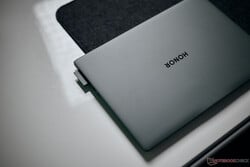
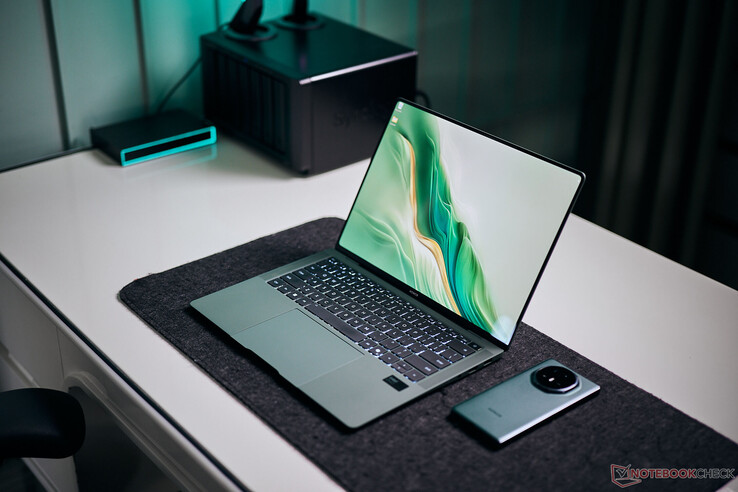












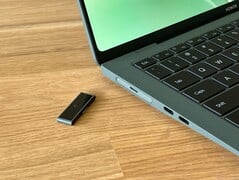
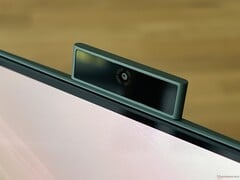

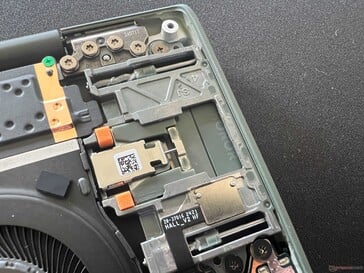
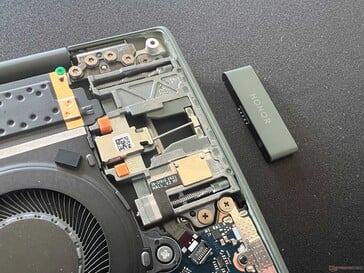
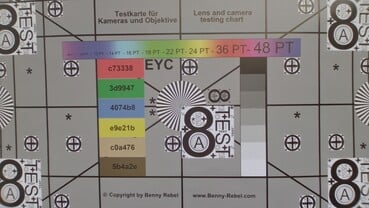
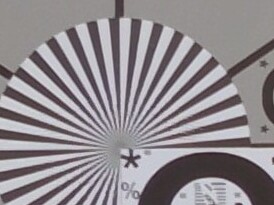
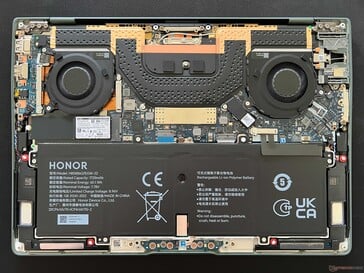
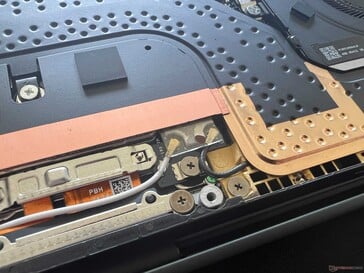
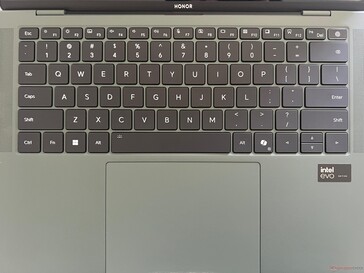
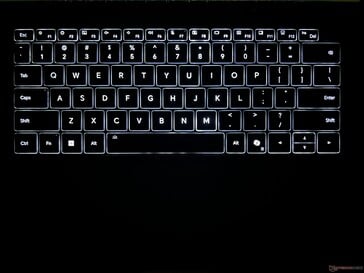
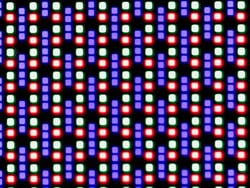

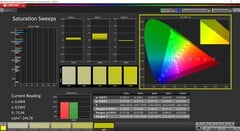
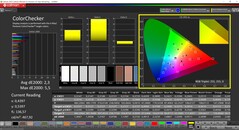

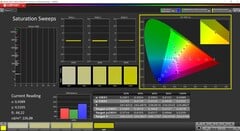
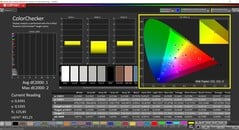

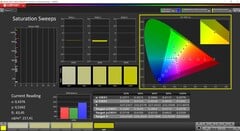
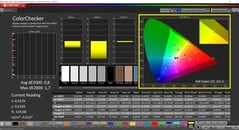
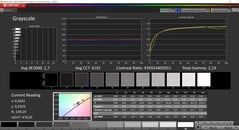
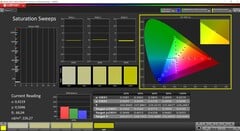
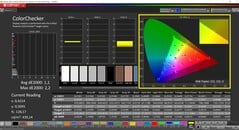
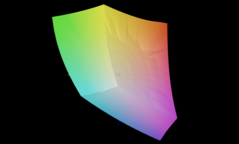


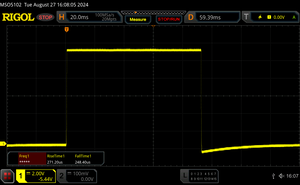
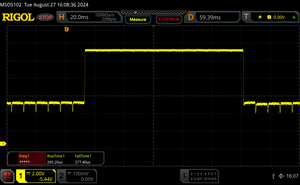
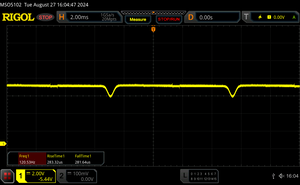






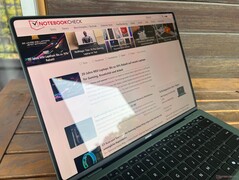
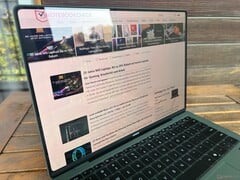
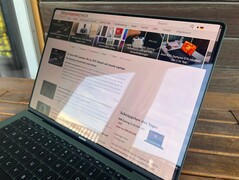
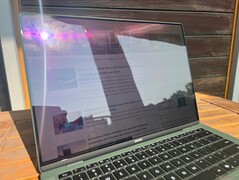
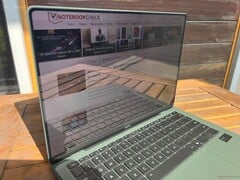
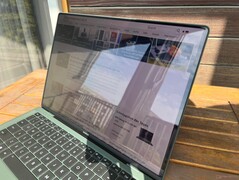


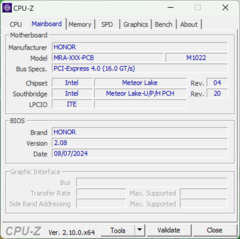
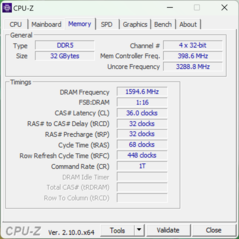
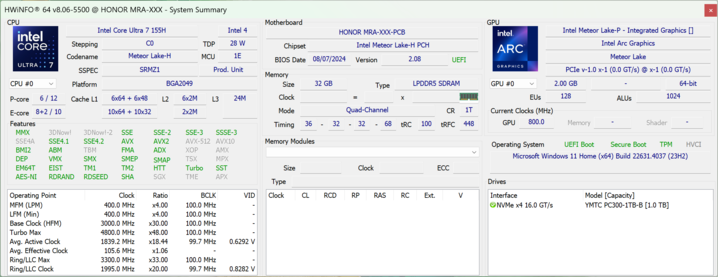
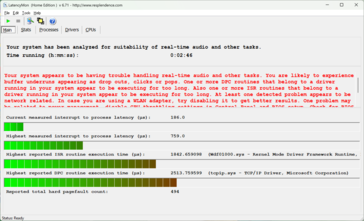
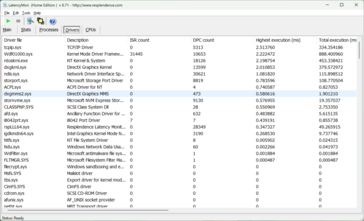


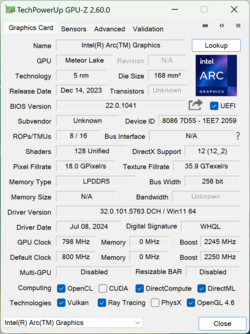
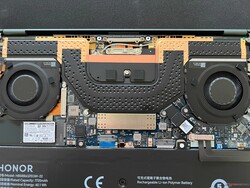
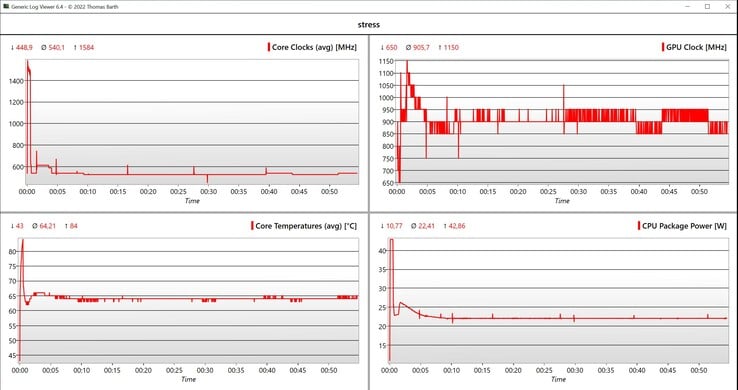
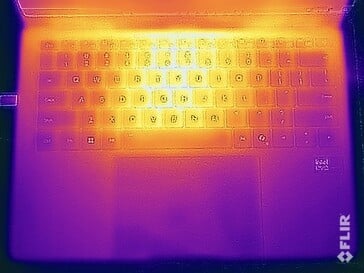

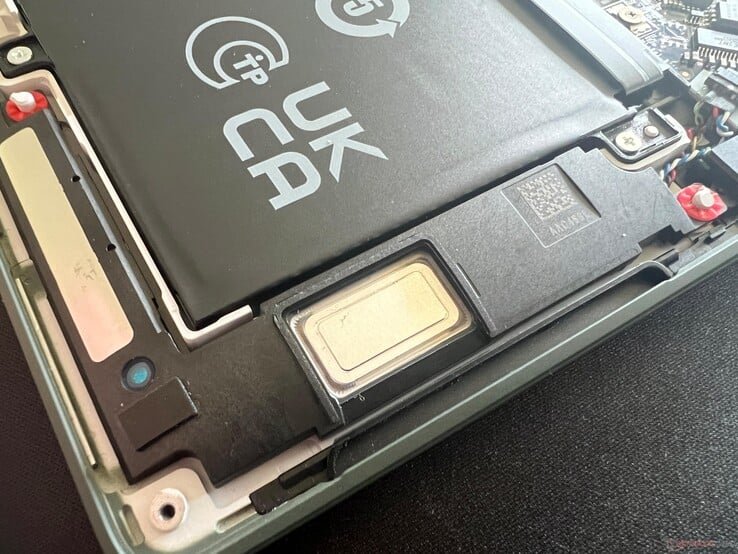
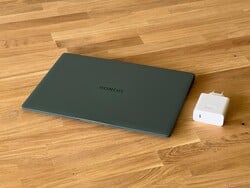
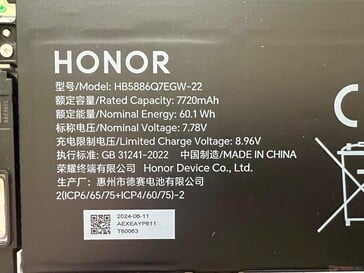

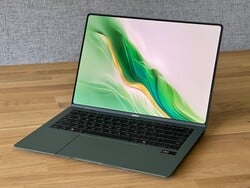
 Total Sustainability Score:
Total Sustainability Score: 








